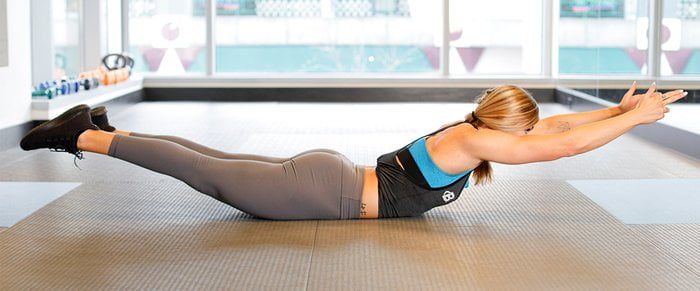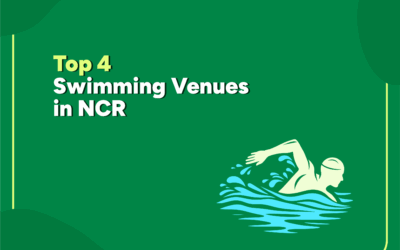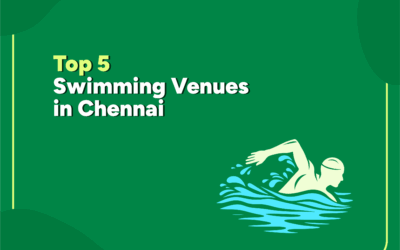Why You Should Never Ignore Your Core? When it comes to training for your favourite sports, it’s tempting to focus on developing more skilled movements and specific strengths. However, before you get caught up in the details, it’s a good idea to remember consistent core strengthening exercises. Focusing on the more specific skills could mean ignoring the basics of good, all-around physical fitness.
When not practising with cardio drills or weight lifting, it’s easy to ignore those exercises geared toward strengthening the core itself. This is a mistake, though.
Core exercises enhance overall health and mobility. In addition, they make it possible to safely lift weights, correct bad form or posture to prevent injury, and promote overall physical strength and agility.
Strong core muscles will make other activities easier, from swinging a golf club or tennis racket, to increasing running endurance. Weaker and less flexible core muscles, on the other hand, will make the moment in your limbs more difficult and less powerful, since a lot of your physical force comes from your core.
While some sports training programs might prioritize the core more than others, just about all sports require core power.
Your Core is More Than Abdominals
While many people associate core exercises with showy abs, the core has many layers of muscle to maintain. The core refers to a large group of muscles that surround the spine and protect the internal organs.
The most visible abdominal muscles are only the top layer. The rest of the core is made of layers of muscles that surround the torso and spine, including:
- Transverse abdominis that surround the spine and make up the “corset.”
- Two layers of oblique muscles that help us rotate our torso and bend sideways.
- The topmost abdominals, called rectus abdominis, that flex the torso forward and make up the visible abs.
- Pelvic floor muscles that support the lower organs.
- Back muscles that hold the spine in place.
- The diaphragm, which is largely responsible for our breathing.
Each of these muscles is vital to everyday activities as well as sports and physical performance.
Every Sport and Activity Uses Core Strength
The core supports the entire muscular system. We use it constantly in day-to-day activities, including every time we stand up or sit down. The core is also integral to activities as simple as standing and holding ourselves upright.
It’s important to build strength in the core before you can build strength in other parts of the body. There are many exercises that are more difficult and even dangerous if performed with a weak core.
For example, many people have difficulty doing push-ups due to a need to build core strength. This can be indicated by hips and stomach areas that sag during the pushup. A weak core can also be seen when weight-lifting. If dead-lifts hurt your back or force you to hunch forward to complete the lift, this is a sign that you need to do more exercises to strengthen the core.
If you find yourself having to overcompensate with alternate muscle groups when performing an exercise, it’s worthwhile to work on the core to build a strong base for more extensive physical activity.
Improve Your Posture
Bad posture, such as slouching and slumping through the shoulders, stomach, and above the pelvis, puts wear on the spine. Poor posture can also increase the likelihood of injuring yourself during movement and practices.
Strong core muscles promote an upright posture. This allows us to use other muscles without risk to our body. It also allows for deep breathing when needed, making us less likely to get winded during exercise.
Good posture will also increase the positive effects that you derive from practice and workouts overall. At the same time, upright posture will generally project a sense of self-confidence.
Improve Balance and Stability
Your core is responsible for stabilizing your body. This is important for quickly switching directions. You might also need stability to balance on a precarious object or taking a big swing with a club, bat or racket.
Any kind of pivot or rapid movement challenges our balance and requires an engaged core. This balance can also help to keep you from falling or and it can even help to prevent tripping on uneven terrain, which will not only increase performance but also prevent injury.
Engage the Core During Physical Activity
A strong core needs to be activated. Many people have developed a strong core from their workouts. However, they don’t always engage them when they need to. In this case, it’s important not to overdo your core exercises and risk injury.
Instead, it’s important to tap into these muscles that you already have and put them to good use. You can do this by increasing your awareness of your core during your usual activities. This will help you to engage your core.
Your core muscles can be engaged during workouts and practices. It might also be a good idea to remain aware of them during resting time as well. Notice any time that you are slouching or could straighten your posture while remaining in a relaxed position. The more you do it, the more it will become second nature to you.
How to Start Adding Core Strengthening Into Your Workout
Fortunately, there are a lot of core strengthening activities that require minimal equipment. Many core exercises can be done anywhere and don’t require special equipment. These include planks, leg lifts, bridges, and many of the poses involved in yoga practices. Balancing poses are also a way to strengthen the core while helping to improve agility for sports performance.
For those ready to get serious about core strength, exercise routines equipment, such as those used in pilates, can help you develop a strong base. This will get you on your way toward a more powerful and agile physical strength.
Ultimately, the strength of your core sets a baseline for physical performance. This is particularly important in sports that involve a lot of movement and balance. Core strength helps you keep a steady breathing pattern throughout the cardio activity. It also helps with your physical stability and balance during tight physical manoeuvres. A stronger core will allow more flexibility and mobility than a weaker core, as well as more force behind physical movements.





0 Comments